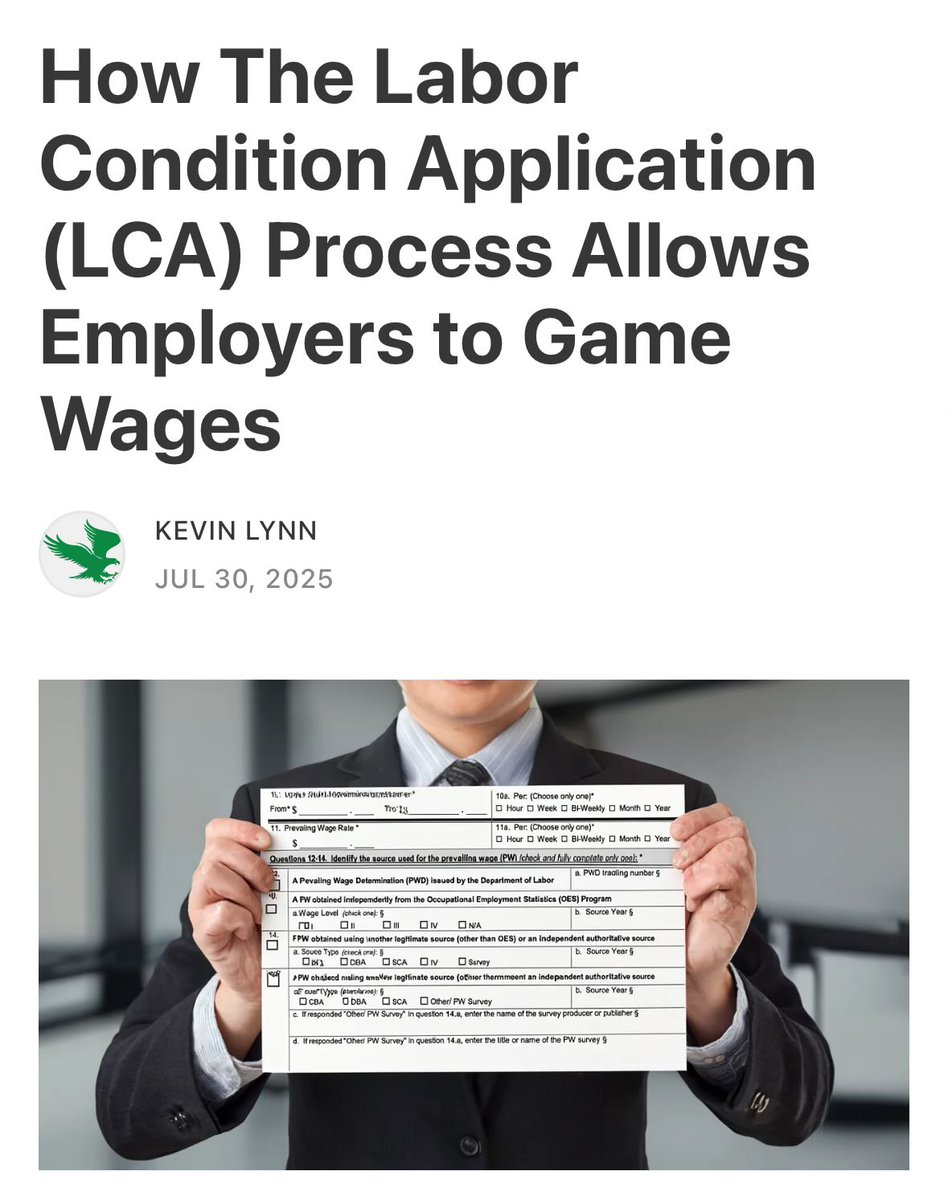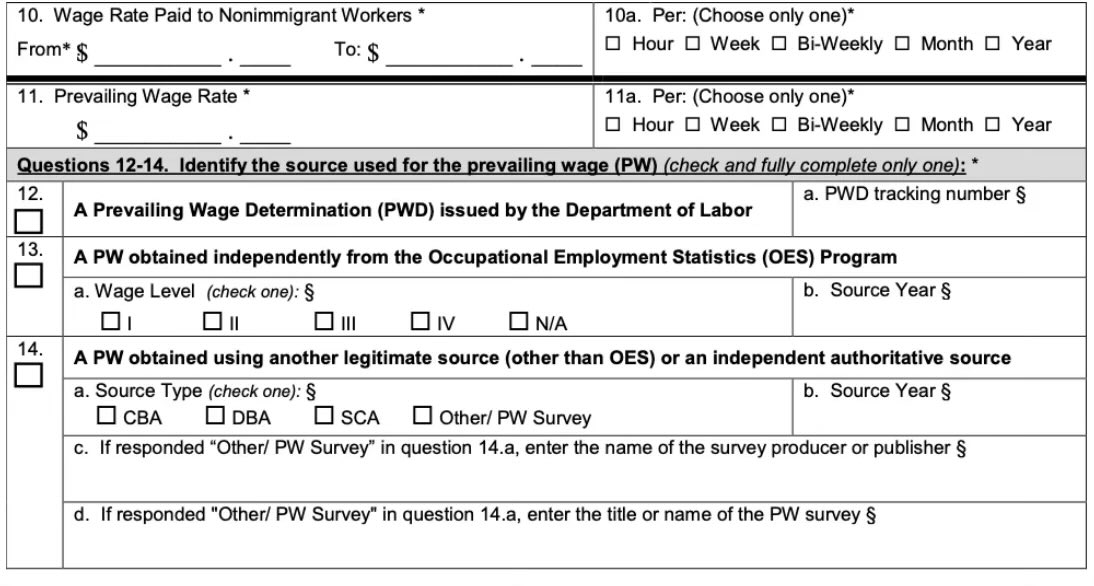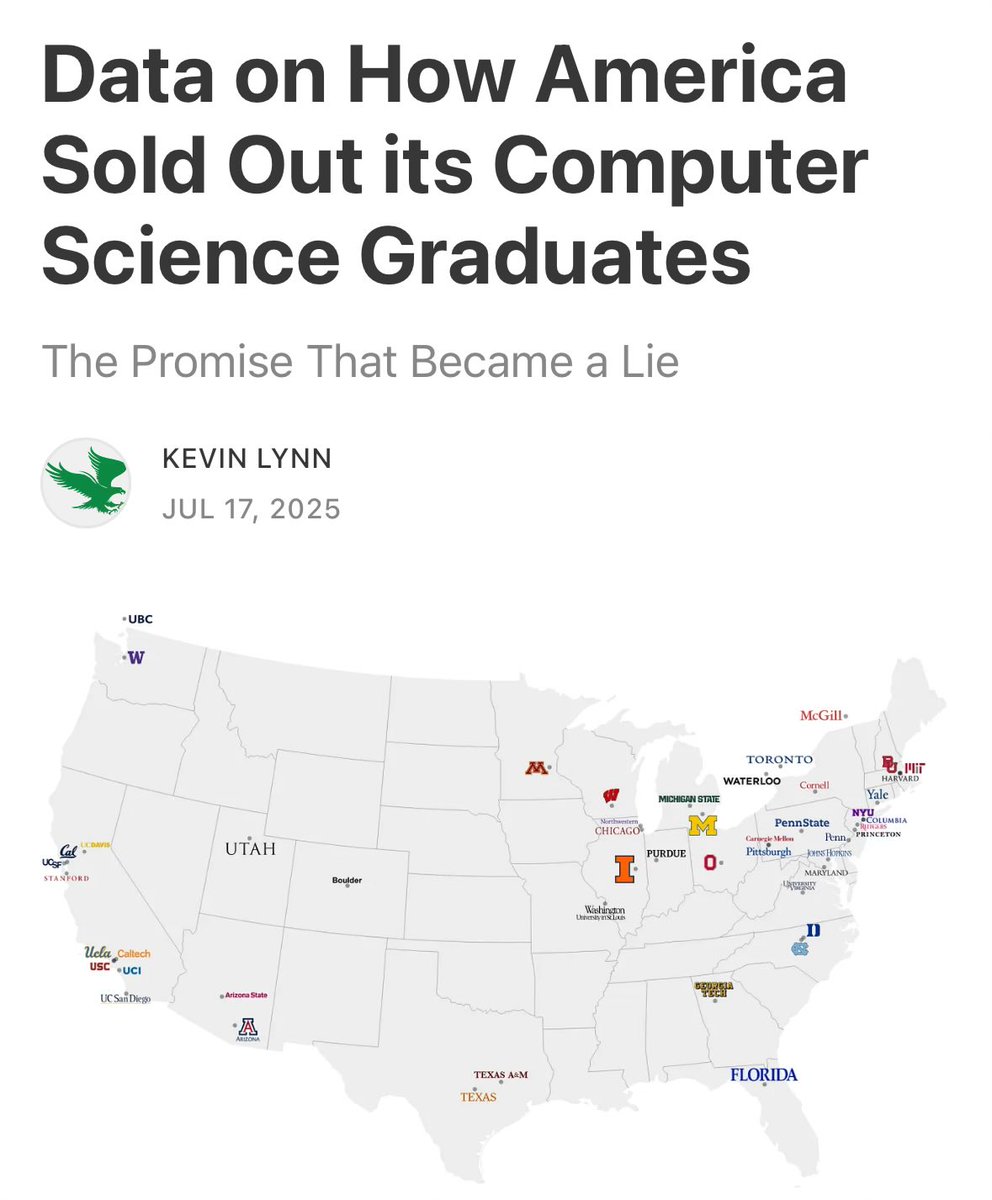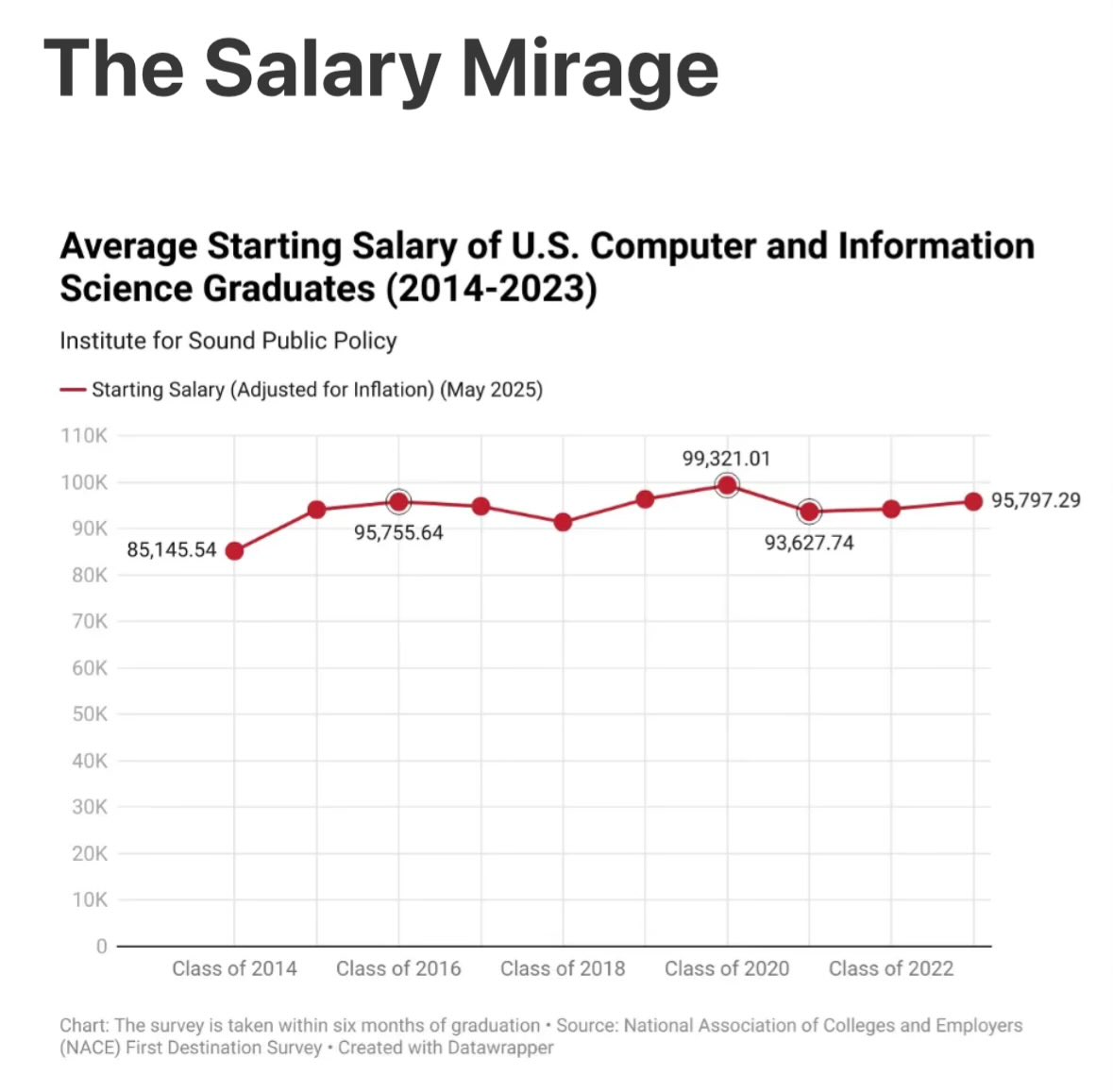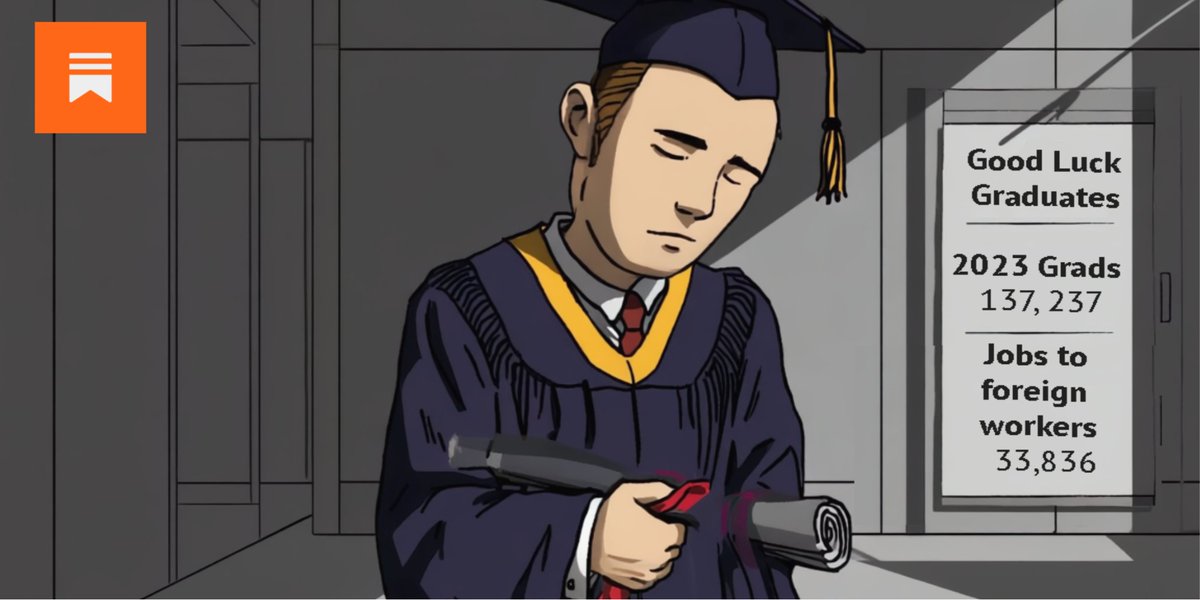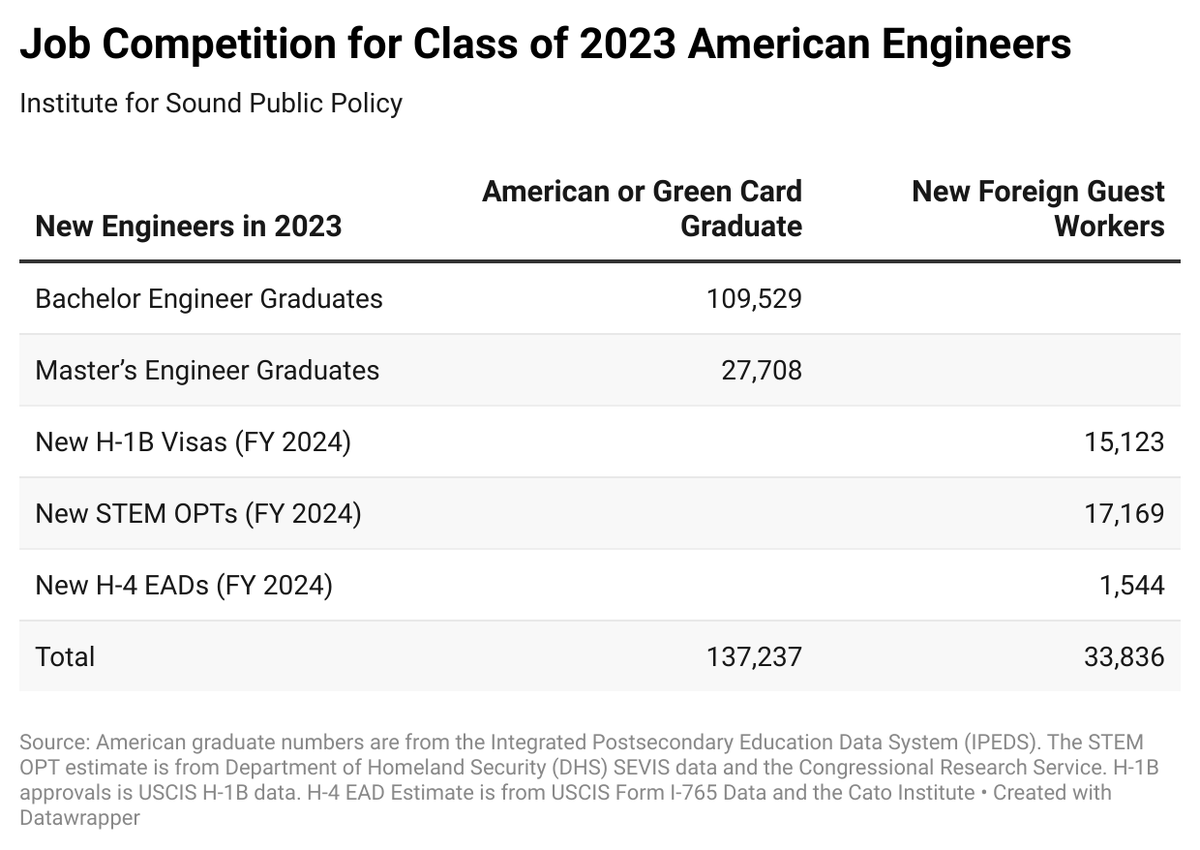🧵You thought the H-1B visa was bad? Wait until you hear about the largest guest worker program killing jobs for new American college grads—the Optional Practical Training (OPT):
• No caps
• Employers get payroll tax exemptions
• No wage requirements
@NumbersUSA explains:
• No caps
• Employers get payroll tax exemptions
• No wage requirements
@NumbersUSA explains:
OPT was originally a 1-year work permit for international students graduating from U.S. colleges to gain U.S. work experience to take back to their home countries. It was never meant as a permanent immigration pathway, but rather a short-term opportunity for skill development 

OPT was intended as a short-term work permit, but it evolved into a tool to secure U.S. jobs and a pathway to for securing long-term work visas like the H-1B. Employers saw OPT workers as desperate, willing to do anything for H-1B sponsorship before their permit expired.
In 2008, Bill Gates lobbied Congress to expand H-1B caps, claiming a tech worker shortage. However, there was significant pushback and it was pointed out that Microsoft was laying off U.S. workers while simultaneously advocating for more foreign labor.
After Bill Gates failed to get Congress to pass an immigration bill expanding H-1B visas, he enlisted lobbyist Jack Krumholtz to devise a plan using the OPT program to bypass the H-1B caps. 

At a cocktail party, lobbyist Jack Krumholtz met then-DHS Secretary Michael Chertoff under George W. Bush and pitched his proposal to expand the OPT program. He suggested extending its duration beyond 1 year, effectively creating a workaround for H-1B visa caps. 

In the months after Krumholtz's meeting with Chertoff, universities and the Chamber of Commerce launched a massive lobbying push to extend OPT. Their efforts succeeded! Through administrative regulations, they effectively created a new guest worker program without needing congressional approval.
The new OPT program, called STEM-OPT, allowed international students with STEM degrees to extend their OPT from 1 year to 29 months. This extension gave them more time to work in the U.S. and provided employers with a new pipeline for cheaper compliant labor.
After STEM-OPT was introduced, the number of international students, particularly from India and China, skyrocketed. Universities actively advertised STEM-OPT to attract these students, seeing them as a lucrative source of revenue. 

Some universities, like UC Berkeley, began designating degrees like Journalism as "STEM" to capitalize on the lucrative STEM-OPT wave. This allowed them to attract more international students, tapping into a profitable market while offering extended work permits as an incentive. 

The number of STEM-OPT work permits skyrocketed, making it the largest guest worker program in the U.S. It now surpasses the H-1B visa program in yearly issuance. 

A lawsuit was filed by @IRLILaw against the illegal creation of the STEM-OPT program. In response, the Obama administration proposed a new rule, which ultimately extended the STEM-OPT program to 36 months, further expanding the duration for foreign students to work in the U.S.
There was another lawsuit against the illegal creation of STEM-OPT, including a notable case from the Washington Alliance of Tech Workers v. DHS. However, courts consistently shut down the challenges, and an appeal to the Supreme Court ultimately went nowhere. 

What makes the OPT program so sinister is its lack of wage rules—employers can pay OPT workers as little as "unpaid interns." Additionally, the government incentivizes hiring foreign grads over American ones by offering employers payroll tax exemptions through the IRS. 

Remember the Boeing 737-Max crashes caused by glitchy software, and how Bloomberg revealed the work was outsourced to foreign workers at Indian IT firms for $9/hr? There's speculation those workers were on OPT based on an article by The Atlantic: 

In closing, the OPT program is a guest worker scheme disguised as an internship for foreign students. Universities are selling work permits instead of education. Created illegally like DACA, Trump should end OPT to protect American college grads from unfair competition.
🧵
🧵
• • •
Missing some Tweet in this thread? You can try to
force a refresh




